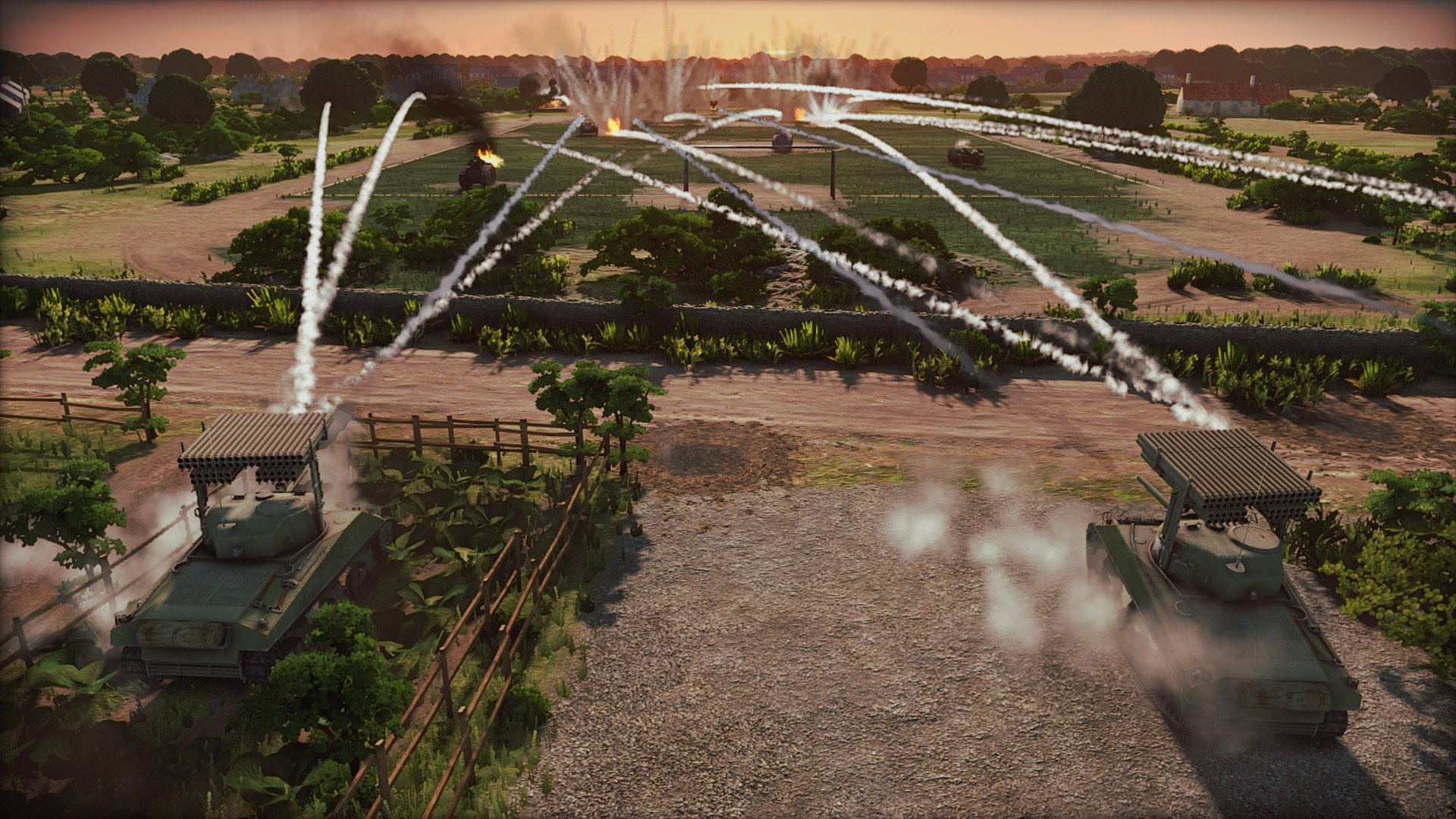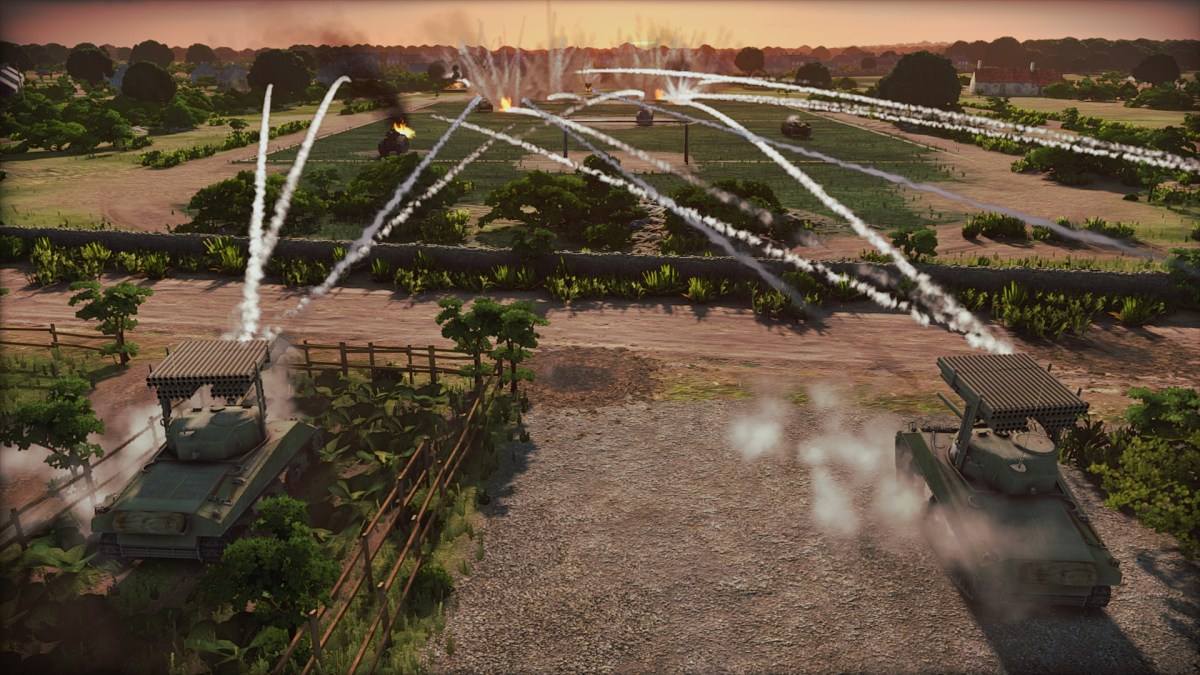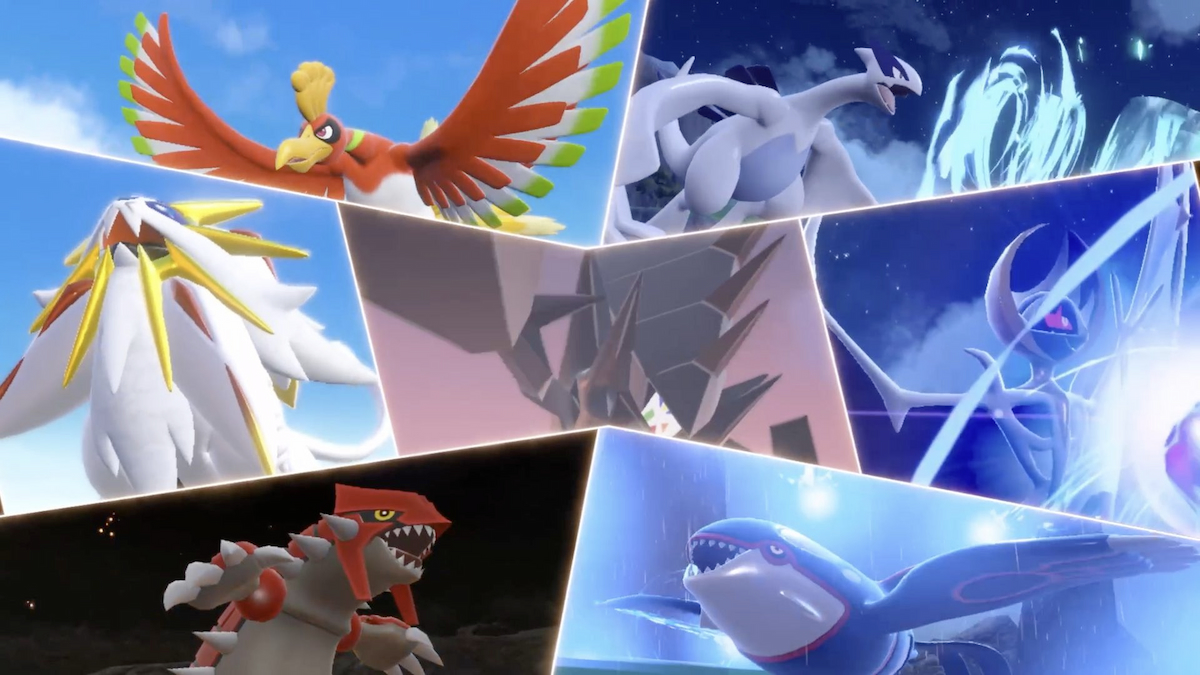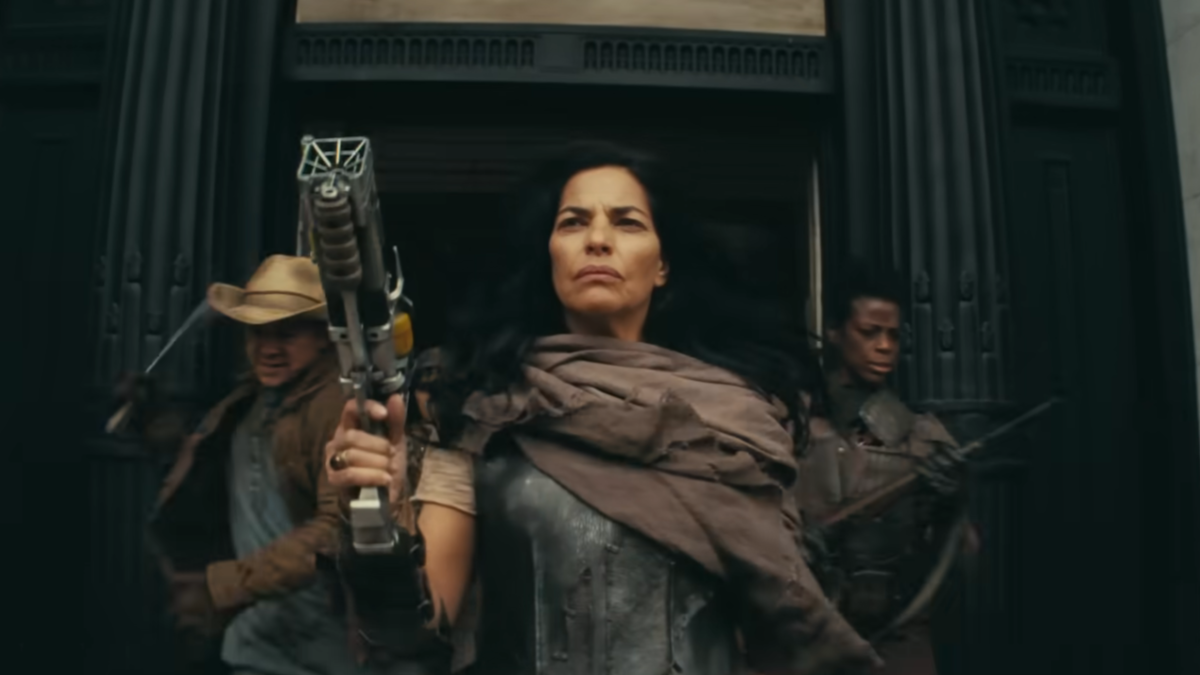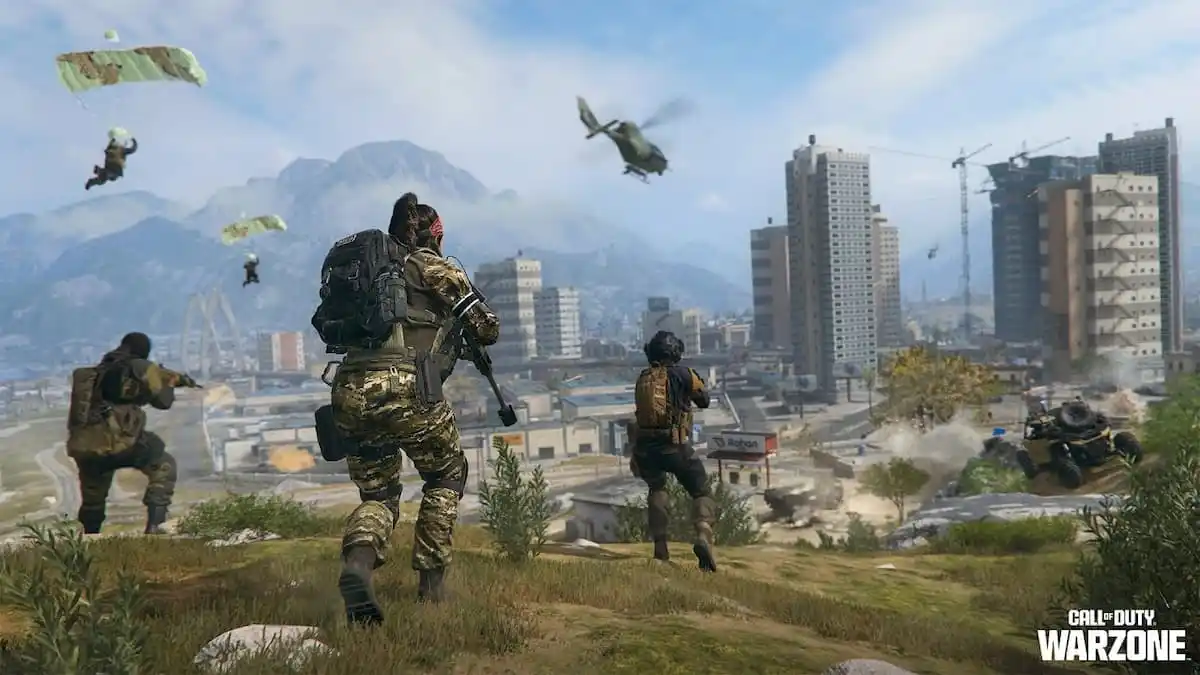Not just for history teachers
Given my career as a history teacher, you can bet your bippy I didn’t “accidentally” post this on June 6.

Steel Division: Normandy 44 (PC)
Developer: Eugen Systems
Publisher: Paradox Interactive
Released: May 23, 2017
MSRP: $39.99
Given a number of ideas to grasp at once in Steel Division, I’m happy to say there is a competent tutorial that will leave players prepared for the single or multiplayer. The fully voice-acted tutorial guides players through the essential phases of a battle while simultaneously not overwhelming them with tons of information. It doesn’t touch on every single detail, but what is left out can be ascertained by the player after only a few skirmishes.
Each battle begins by asking the player to create their Battlegroups. This is a deck-building mechanic that allows players to customize their available units. Units cost a variable amount of resources to call into battle, and some can only be used after a certain amount of time has passed. There are three phases to each battle, simply titled A, B, and C. The bigger and better units are often locked behind the B and C tiers and cost more resource points, so it is important to consider all factors when building a deck. It’s possible to load up on more A units than anything else, but where will you be when phase C rolls around?
These decisions also influence play during each battle. It’s possible to sit on a stockpile of resources (which are gained automatically over time) as phase B approaches and unleash a handful of those units all at once, but doing so means that the current troop count remains stagnant. Splitting the battle into these phases is a welcome addition that not only helps players get accustomed to the game, but allows for more even footing among opponents, leaving the rest up to strategy.
And boy, is there strategy here.
I’ll admit, early on, I did a lot of “attack-moving” of my units. Essentially, I figured I was okay to send them in a general direction and say “just shoot at whatever you encounter.” But man, that does not work here. Steel Division is about positioning, front and back lines, and awareness. This is much slower-paced than many other real-time-strategy games. Setting up soldiers in buildings or inside of forests to hold a flank takes precise planning and forethought to execute correctly.
The front lines are perhaps the most crucial element to the gameplay. Steel Division beautifully displays the front lines of battle moving in real time by display constantly-shifting blue and red lines. As one side starts to push forward, the lines bend and sway accordingly, even without any vision of the units. This allows players to recognize if a flank is getting pushed in, or just sense the enemy’s presence. However, it doesn’t just move as any unit pushes forward, but more so indicates where armies are clashing and where large insurgencies of troops are coming from. In other words, it’s a great summary of map control, but it is still possible to send out recon units or small armies to surprise the enemy. It’s a brilliant upgrade from the traditional “fog of war” system that many RTS games employ.
Contributing to the “gosh, war sucks” feeling is the attrition felt during battle. There are no bases here (and by extension, no base-building) to constantly resupply the field with units. The Battlegroups each player builds pre-battle come with a limited supply of each unit. Once that supply is exhausted, that unit can no longer be called in. Ammunition is also limited, requiring supply units to be used to resupply troops in the field.

It can be difficult to take everything in at once during a battle. The spacebar will zoom to a recent event, but that can do little to help with comprehension. Units can be easily identified once on foot, but since many units start in a mobile transport of some sort, I usually have no idea what’s in store until I unload. This may be alleviated as I learn the specific unit names, but remains a small frustration for now.
I can’t say I’m very good at the game, but that hasn’t stopped me from playing. The single-player is well crafted with WWII-era videos, great mission introductions, and realistic events. There are three campaigns (US, German, and UK), each consisting of four missions with varied mission objectives. These missions aren’t quick, either; the single-player isn’t some quick throwaway mode. That being said, it’s hard to justify buying all of what Steel Division offers just for these 12 missions. Multiplayer is the key to longevity, even if the AI is surprisingly competent.
Playing online can be as competitive as 1v1 matchmaking, or as casual as a 10v10 clusterfuck. Personally, I prefer the larger engagements because it’s less stressful and fewer people notice if I’m not pulling my weight. That being said, there is a higher chance to have a poor connection and lag is quite frequent in anything other than 1v1. There’s a decent population out there at the moment, though the custom games server browser can seem quite barren. Luckily, there is quickplay and matchmaking for something more expedited.
As a history teacher, I love the historical backdrop and attention to detail; as a gamer, I love the blending of strategy and excitement that comes with the intermingling of mechanics old and new to the genre. Somehow, World War II has become en vogue once more and Steel Division has come at a perfect time in the cycle of gaming trends. It’s hard to remember the last time an RTS game gave me both the challenge of careful planning and the thrill of execution at the same time. Those only interested in a single-player affair might come away a little disappointed, but the package itself is very well-rounded and breathes some much-needed life into the genre.
[This review is based on a retail build of the game provided by the publisher.]
